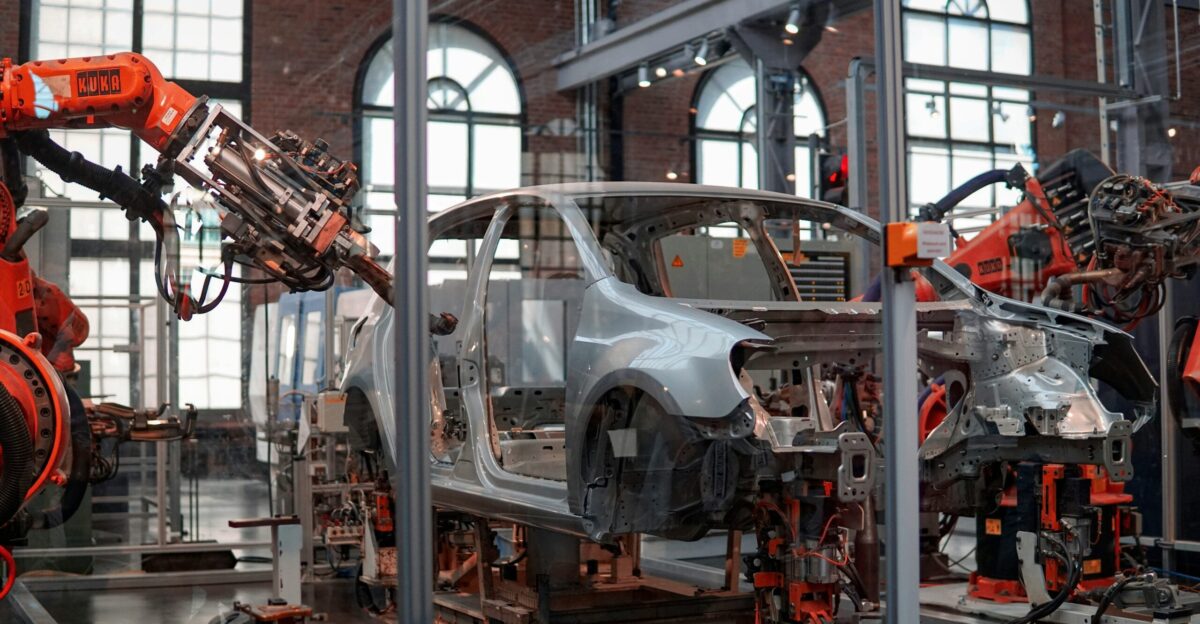
This month, nearly 575 employees at two North Carolina truck manufacturing facilities received heart-wrenching news: Their jobs were taken right from underneath them. This trend represents the economic downturn that the commercial vehicle sector is facing.
While Daimler cited “sustained reduction in orders and diminished build rate” in official filings, the reality runs deeper than simple market fluctuations. However, the layoffs at Daimler Truck North America’s Mount Holly and Gastonia plants are only the beginning.
Thousands Of Jobs Are Lost

Thousands of workers are getting the boot as the commercial trucking manufacturing sector hemorrhages jobs at an alarming rate. Meanwhile, Daimler’s North Carolina cuts are only a fraction of the hardships employees are experiencing across multiple states. Other vehicle manufacturers like Volvo Group have dismissed approximately 1,000 positions across its North American operations, while International Motors eliminated 900 jobs at its Mexican plant by shuttering an entire second shift.
The trouble extends far beyond the U.S. continent. Volvo Cars announced 3,000 white-collar job cuts globally, citing trade uncertainty and declining demand. The implications for North Carolina and the locals who depended on the cornerstone industry are beyond grim.
Historical Context

In the past, North Carolina has been one of America’s top producers of commercial vehicles, employing nearly 475,000 workers across the sector. Daimler Truck North America’s Mount Holly facility is a cornerstone of medium-duty truck production, while the Gastonia facility has been integral to the company’s supply chain since its establishment.
The state’s manufacturing sector contributes 18.31% of total economic output and has weathered previous downturns. However, pressure from tariffs, regulatory uncertainty, and global trade tensions has led to a rapid decline, spelling trouble for thousands of employees.
Economic Hardships

The commercial vehicle industry has seen multiple economic hardships this year, all culminating in an unsustainable environment. President Trump’s steel and aluminum tariffs have doubled to 50%, dramatically increasing the cost of raw materials for truck manufacturing and forcing companies to absorb massive price increases.
Daimler’s Mount Holly plant specializes in the medium-duty truck market, which has created hundreds of jobs. However, this market has seen a staggering nine declines in just one year, with May 2025 sales falling 9% year-over-year. All of these factors converged, and a heartbreaking announcement was made on July 11 that would spell uncertainty for 573 Daimler employees.
Temporary Layoffs

On July 11, 2025, Daimler Truck North America filed Worker Adjustment and Retraining Notification (WARN) Act notices with the North Carolina Department of Commerce. This announcement revealed the temporary layoff of 573 employees effective September 9, 2025, giving workers a two-month notice before they would be officially dismissed. Most layoffs are happening at the Mount Holly facility, which will lose 546 workers, primarily truck assemblers. At the same time, the Gastonia plant will cut 27 positions focused on parts and component operations.
Company spokesman Andrew Johnson has confirmed the layoffs stem from a “sustained reduction in orders and diminished build rate. ” Affected workers received regular pay through September 9 despite their final work day being July 18. With no promise of being rehired, employees face the hardship of looking for new jobs within the next two months before their salary ends.
The Economic Impact

The layoffs will impact Gaston County, where hundreds were employed with average hourly wages of $32.00. Without these employment opportunities, the economy could suffer. Mount Holly, a community where manufacturing constitutes the economic backbone, will see nearly 600 families directly affected by the job losses, with ripple effects extending to local suppliers, restaurants, and service businesses.
Some employees had just secured significant wage increases through their UAW contract, making this abrupt news all the more heartbreaking. Gaston County’s unemployment rate, currently below the national average of 3.7%, will likely face upward pressure as these skilled workers compete for other available jobs. While statistics highlight the ongoing battle, they all represent people facing economic hardships.
The Effect on People

Every statistic represents a family grappling with sudden uncertainty and financial stress in communities where manufacturing jobs have provided generational stability. Many different employees with different skills will now be scattered into other sectors.
The affected workers range from veteran assemblers with decades of experience to newer hires who joined during the post-pandemic hiring surge. Many of them relocated specifically for these well-paying positions with comprehensive benefits. If alternate employment cannot match previous salaries, households could face lower average incomes.
A Broader Trend

It’s not just Daimler that is struggling. The company’s and employees’ difficulties are part of a cascading crisis affecting virtually every major commercial vehicle manufacturer as the industry confronts its most severe downturn in years. S&P Global Mobility estimates that tariffs could increase new truck prices by approximately 9%, while steel and aluminum duties have already added 2-3% to highway tractor costs.
Competitors face similar pressures—ACT Research reports that Class 8 truck production is expected to decline through the second half of 2025, with OEMs aligning build rates to softer demand expectations. The used truck market has also been affected, with higher new vehicle prices driving up demand for pre-owned equipment and creating additional competitive pressures. These examples reveal the real truth: the commercial vehicle market is distressed.
An Unprecedented Downturn

North American Class 8 truck orders have gradually declined, dropping to 9,400 units in June. The loss in units sold represents a staggering 36% decline from the previous year, marking the weakest performance since the height of COVID-19 disruptions.
Manufacturers have record-high stock as supply passes demand. This means that production has to be cut, which reverberates back to employees who are left redundant.
The Road Ahead

While the commercial vehicle industry navigates this unprecedented storm, the real question remains – do current layoffs represent a temporary adjustment… or the beginning of a more permanent restructuring?
Daimler’s characterization of the cuts as “temporary” provides little comfort to affected workers, given the company’s acknowledgment that market recovery timelines remain uncertain. The broader question looming over communities like Mount Holly and Gastonia is whether manufacturing jobs will return in the same numbers and quality as before. The workers affected by these layoffs find themselves at the crossroads of an industry transformation whose outcome remains uncertain.